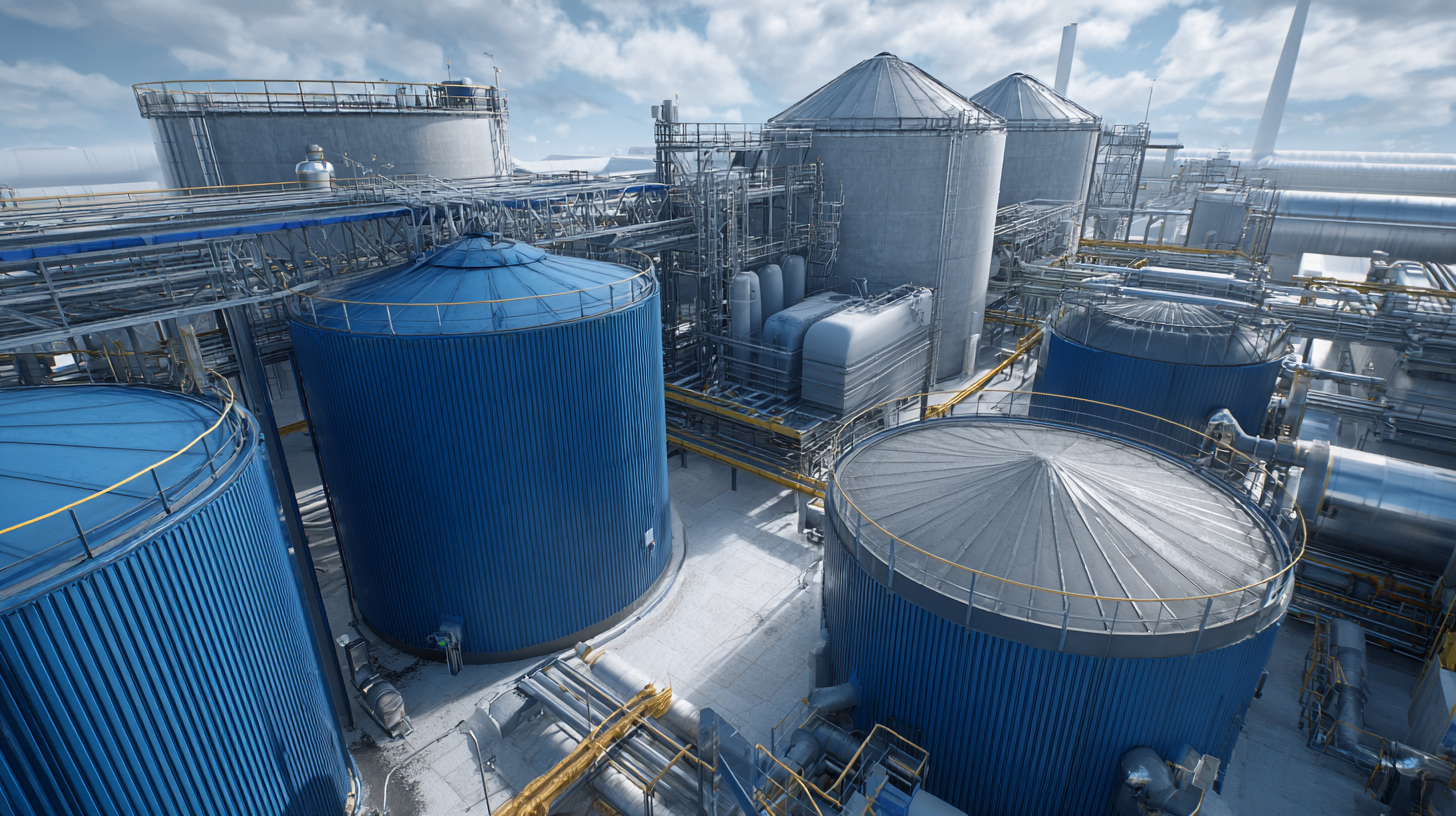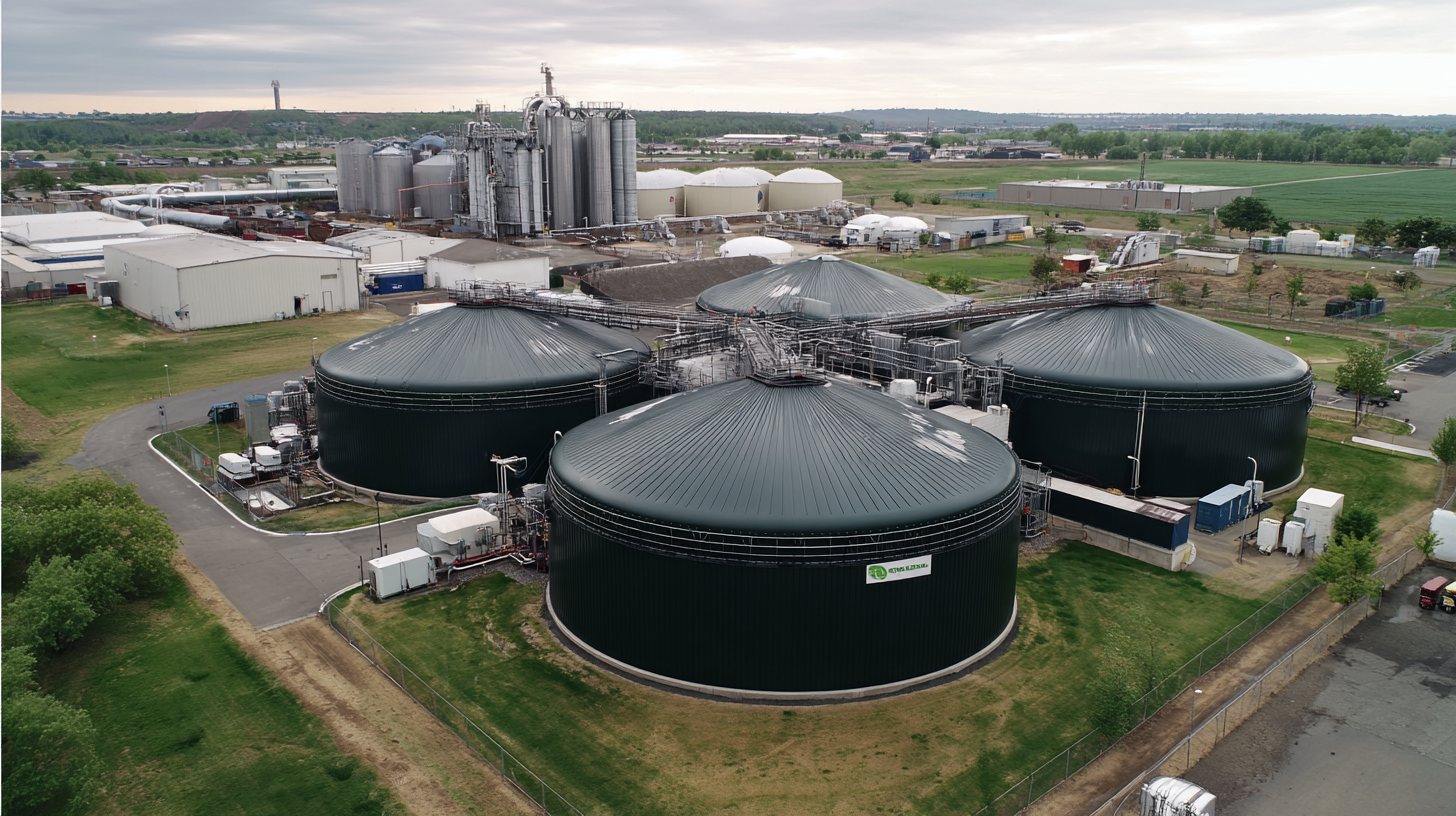In an era where sustainability is paramount, maximizing efficiency in renewable energy solutions becomes a critical goal for businesses and communities alike. One of the most promising technologies in this realm is Anaerobic Digestion, a process that not only transforms organic waste into valuable energy but also addresses pressing environmental concerns associated with waste management. By leveraging the power of Anaerobic Digestion, we can convert food scraps, agricultural waste, and other biodegradable materials into biogas, a renewable energy source, while significantly reducing landfill usage. This blog will explore how to find reliable suppliers for Anaerobic Digestion systems, ensuring optimal implementation and performance. By understanding the best practices, we can enhance our sustainability efforts and maximize the benefits of this innovative solution, creating a cleaner, greener future for all.

Anaerobic digestion represents a transformative approach to waste management, particularly in harnessing renewable energy from organic waste. By breaking down materials such as food scraps and agricultural residues in the absence of oxygen, this biological process generates biogas, a renewable energy source that can be converted into electricity and heat. This not only mitigates landfill use but also significantly reduces greenhouse gas emissions, making it a key player in the transition to sustainable waste management practices.
The benefits of anaerobic digestion extend beyond energy production. It offers a solution for nutrient recovery through the production of digestate, which can be utilized as a high-quality fertilizer, enriching soil health and promoting sustainable agriculture. Additionally, advancements in co-digestion techniques, where multiple types of organic waste are processed together, have demonstrated enhanced energy recovery rates. As industries shift their focus towards circular economy principles, anaerobic digestion emerges as a viable option for transforming waste into valuable resources, reinforcing the potential of renewable energy technologies to create a sustainable future.
Anaerobic digestion represents a pivotal advancement in transforming waste management into a more sustainable practice. At the heart of this process lie key technologies that enhance efficiency and functionality. For instance, advanced biogas reactors optimize conditions for microbial activity, leading to higher biogas yields from organic waste materials. The integration of real-time monitoring systems enables operators to track variables such as temperature and pH levels, ensuring optimal digestion conditions are maintained.
**Tip: Implementing smart sensors for continuous monitoring can significantly reduce operational downtime by promptly identifying any inconsistencies in the digestion process.**
Moreover, the incorporation of pre-treatment methods like thermal hydrolysis breaks down complex organic matter, allowing for improved digestibility. This technology not only increases the efficiency of biogas production but also minimizes the volume of residual waste, making the process even more eco-friendly.
**Tip: Investing in pre-treatment technologies can enhance the overall yield, maximizing profitability while contributing to a greener waste management solution.**
Anaerobic digestion is a remarkable process that not only minimizes waste but also significantly contributes to reducing greenhouse gas emissions. By decomposing organic materials in an oxygen-free environment, it transforms waste into biogas, which can be harnessed as a renewable energy source. This process effectively captures methane, a potent greenhouse gas that would otherwise be released into the atmosphere if organic waste were left to decompose naturally. By diverting waste from landfills and utilizing it for energy production, anaerobic digestion mitigates the release of harmful gases, thereby playing a crucial role in combating climate change.
The impact of anaerobic digestion on greenhouse gas emissions reduction is profound. Studies indicate that facilities employing anaerobic digestion can reduce methane emissions by over 50%, contributing to healthier ecosystems and improved air quality. Furthermore, the energy produced from this process can displace fossil fuel use, leading to additional reductions in carbon emissions. As cities and industries increasingly adopt this sustainable technology, the overall benefits extend beyond waste management; they herald a cleaner, greener future that aligns with global efforts to lower carbon footprints and enhance environmental stewardship.
The adoption of anaerobic digestion (AD) technology is rapidly increasing globally, transforming waste management practices into energy generation solutions. According to the latest report by the International Renewable Energy Agency (IRENA), the global installed capacity of anaerobic digestion increased from 8.5 GW in 2018 to over 12 GW in 2022, showcasing a robust annual growth rate. This technology not only helps in managing organic waste effectively but also contributes to renewable energy production, reducing greenhouse gas emissions by up to 90% in comparison to traditional methods. As countries strive to meet emissions targets, AD offers a sustainable pathway to achieve circular economy goals.
When implementing anaerobic digestion in waste management systems, consider starting small and scaling up gradually. Assess local organic waste availability to optimize feedstock sourcing, ensuring that the AD system aligns with regional waste management needs. Emphasizing education and training for staff will also help maximize operational efficiency. The U.S. Digestate Market Report projects a potential growth rate of 8.9% CAGR through 2030, indicating that investing in AD could yield significant economic benefits alongside environmental advantages.
Additionally, it's beneficial to keep abreast of the latest technological advancements in AD. By adopting integrated approaches, such as co-digestion with other waste streams like agricultural residues or food waste, operators can enhance biogas production rates. This not only improves energy outputs but also creates a more resilient waste management framework, paving the way for effective waste-to-energy solutions.

Anaerobic digestion has emerged as a transformative solution in urban waste management systems, effectively converting organic waste into valuable biogas and digestate. According to a report by the International Renewable Energy Agency (IRENA), anaerobic digestion can reduce greenhouse gas emissions by nearly 85% compared to traditional waste disposal methods. This process not only addresses the growing waste crisis in urban environments but also provides a sustainable energy source. For instance, cities like San Francisco have implemented anaerobic digestion facilities that process over 200 tons of organic waste daily, generating sufficient energy to power around 4,500 homes annually.

Tips for successful implementation of anaerobic digestion in urban settings include conducting comprehensive waste audits to identify suitable feedstock and optimizing plant design for scalability. Utilizing advanced technologies, such as real-time monitoring systems, can significantly improve operational efficiency and resilience. Additionally, engaging the community through educational programs enhances public support and participation, critical for ensuring the success of these initiatives. In New York City, for example, local outreach has played a pivotal role in increasing participation in their organic waste diversion programs, leading to a notable rise in the volume of waste processed through anaerobic digestion.
